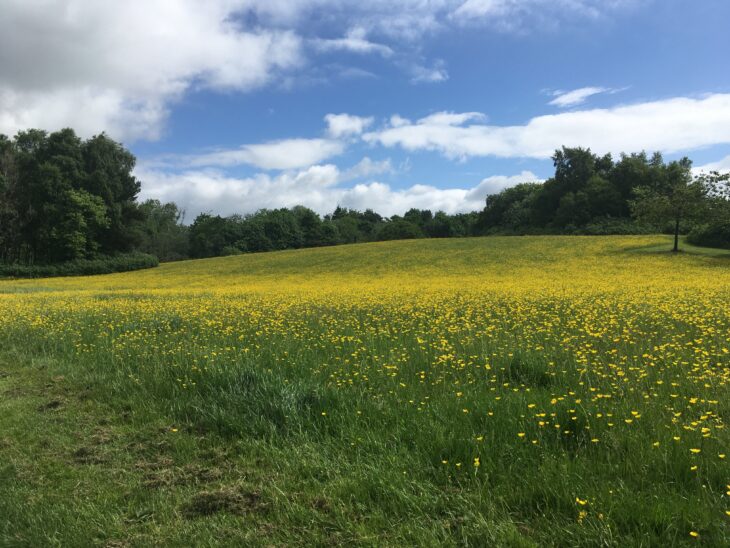A yellow flood
,

Remember at the end of the winter, when the rain pelted down and we would find new puddles and pools had appeared overnight in the flooded fields and greenspaces around the town? Well now it is summer new pools have appeared – but instead of murky brown, this is a flood of brightest yellow.
They are pools of meadow buttercups of course, their shining upcurved petals reflecting the light like a million tiny suns. If there aren’t a million flowers there are certainly many thousands, one of the few wild flowers that we can still see in drifts when so many are struggling to survive at all in the intensively managed landscape we now inhabit.
Seeing them like this gives us a taste of what it must have been like when all meadows and pastures were full of wildflowers, or when arable weeds like poppies and cornflowers dotted the fields. There’s loads of talk about biodiversity now, but often people think of the variety of species – not their numbers. Yet we need abundance too – and it’s so easy to forget what we’ve lost when it’s gone – the dreaded shifting baseline syndrome!
But bizarrely buttercups are easily overlooked. Though we probably all played ‘who likes butter’ with them as children, in adulthood they often become a weed to be removed from the flowerbeds, a scruffy layabout in the road verges and parks, to be mowed down to a municipal monotone greensward. But don’t be misled – they may be common, but they are in fact quite unique. Their petals, and those of others in their family, like kingcups and celandines, shine like no others. This is thanks to layers of air under the surface of the petal, reflecting the light in a way not dissimilar to a butterfly’s wings. That brilliant, shining yellow yells to pollinators, as well as, people, from hundreds of metres away – like floral bling.
Like the winter flocks of geese that fly overhead, and the murmurations of starlings, our yellow pools of buttercups are a small wildlife spectacle that we can all still enjoy – for the moment.
